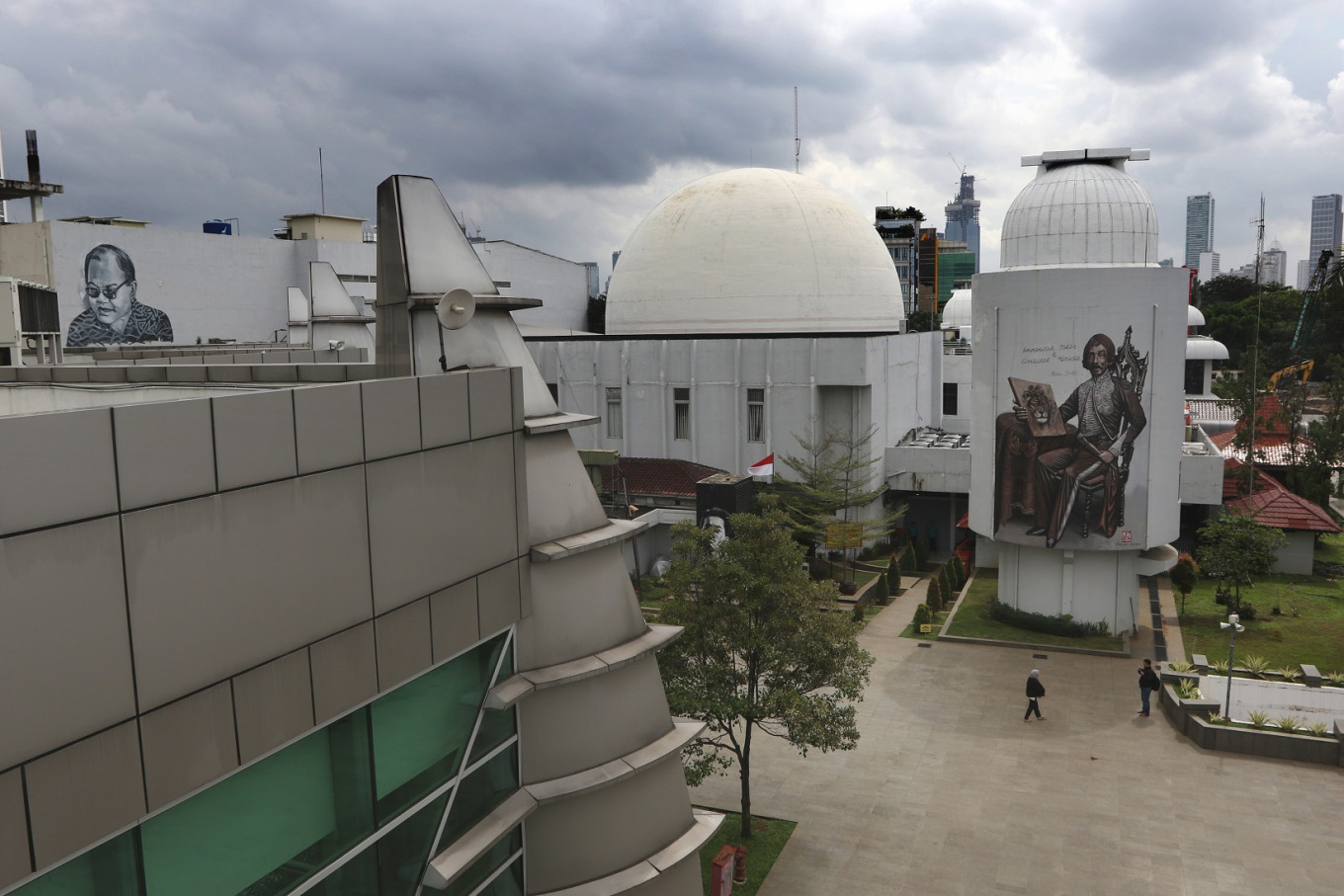Popular Reads
Top Results
Can't find what you're looking for?
View all search resultsPopular Reads
Top Results
Can't find what you're looking for?
View all search resultsWhat it takes to create Jakarta’s world-class arts center
Jakarta’s arts and cultural center Taman Ismail Marzuki (TIM) revamp project also seems to reveal Indonesia’s poor planning habits, especially regarding arts centers.
Change text size
Gift Premium Articles
to Anyone
T
he revamping of Jakarta’s arts and cultural center, Taman Ismail Marzuki (TIM), however controversial, will likely continue if the threat of the ongoing pandemic can be overcome. Many have voiced concerns that the facelift is at odds with the center’s role as a training ground for artists in the nation’s capital. Is this assessment accurate? It certainly has its reasons.
First, there was a missed opportunity of discussing the project prior to execution. In January, members of the Jakarta Arts Council finally met with Jakarta Governor Anies Baswedan and the Jakarta Tourism and Culture Agency. While the meeting was a welcomed opportunity to raise important concerns and suggestions, there was also restrained optimism on whether anything would materialize at all.
More importantly, the Central Jakarta municipality should have initiated such dialogue long before the machines and workers arrived at the scene. Now that the project is ongoing, will any suggestions be really accommodated?
This project also seems to reveal Indonesia’s poor planning habits, especially regarding arts centers. Whether government or privately owned, many of them are built abruptly without much thought. These buildings become bewildering majestic wonders unfit for function. Venue managements rush to look for performers only after the last drop of paint dries.
In my experience, only a few arts centers sufficiently serve their purpose. Aula Simfonia Jakarta with Jakarta Simfonia Orchestra as one of its resident orchestras, and Rumah Kertanegara in South Jakarta with the Resonanz Children Choir as one of its resident choirs are a few examples of outstanding concert halls. Also worthy of mention is the Salihara multipurpose blackbox theater, the home of the Salihara arts community, also in South Jakarta.
Equally important to project planning is building management. TIM itself has experienced different models. At one point, all performances endorsed by the Jakarta Arts Council could be held free-of-charge. There was also a profit-sharing system with TIM’s Jakarta Arts Center Management Unit (UP PKJ) and a lease system. Meanwhile, the latest model warrants mandatory curating by the Jakarta Arts Council for both paying and non-paying performers.
However, the effectiveness of the different models was never evaluated. This must change. Again, this is where a collaborative process becomes important. The UP PKJ and the Jakarta Arts Council need to include artists and art companies into the conversation. In fact, we all need to make it our mission to make TIM a much better facility following its revitalization.
Building and performance technicians must also be heard. They need to be consulted on flooring, acoustics, seating arrangements and so on. Without them, we’d only be repeating the mistakes of older buildings. In the TIM’s Teater Jakarta, the air-conditioning in the seating area and on stage is not regulated separately, thus performers are exposed to very cold temperatures.
Meanwhile, the colorful seats potentially clash with a performance’s concept. In Teater Kecil, the seats of the theater’s left and right wings oppose each other instead of facing the stage — a rather uncommon arrangement that gets in the way of enjoying a performance. These problems are just a few of the more fundamental and technical problems in both theaters. These problems could be actually avoided if more experienced technicians in stagecraft were involved up to the very smallest details. In art, details matter like small strokes in a maestro’s painting.
With multiple distinctive features to consider, a performing arts center is unlike any other building. It is not your ordinary facility with just another stage, rows of chairs and dressing rooms. The failure to recognize its uniqueness will hinder its full function, or worse, render it useless.
Taman Ismail Marzuki was established in 1968, back when Jakarta was led by governor Ali Sadikin. I started frequenting this complex around the 1980s, when TIM was the best performing arts center of its time. It had an open theater, indoor theater, amphitheater, courtyard theater, exhibition hall, artist studio and meeting hall. The facilities were more than enough for the needs of artists of that era.
The Jakarta Arts Institute (IKJ) was also already established within the complex. There were also a number of dance studios such as the Huriah Adam studio, the Nritya Sundara ballet studio, the Bali Saraswati dance studio, the Padnecwara Javanese dance studio and rehearsal areas for the youth theater and emerging arts groups. Moreover, TIM held diverse art festivals that featured artists from all over Indonesia — all within the complex.
Many artists continue to rely on TIM. As a government-owned facility, TIM is one of the most affordable performing arts building. Given its significance, coupled with cases of ill-designed arts buildings, it’s understandable that TIM’s little-discussed revitalization has made many people anxious, questioning many what-ifs.
I believe all of us, including the governor, share the hope for TIM to become a world-class performing arts and exhibition center. But this vision requires an enabling environment for artists and arts promotion.
Some lessons learned can be derived from Singapore’s Esplanade. Envisioning a top performing arts building, Singapore has attempted to ensure that its local artists are ready to perform at an international level, including the Singapore Dance Theaters. Performances were routinely held at the Kallang Theatre, Victoria Theatre and smaller facilities, and international art events were hosted to create the right environment. When the Esplanade began operating, Singapore was ready inside out. Its forward-looking approach and preparation made sure the vision could be transformed into a reality.
Creating a world-class arts center is clearly more than a matter of bricks and mortar. Imagine a sophisticated-looking computer. Without an equally powerful program, it is just a beautiful but empty shell. With TIM, it would be unwise to focus solely on construction, while overlooking substance.
It is now too late to reverse the project, but it is never too late for the Jakarta government, the Jakarta Arts Council and TIM’s UP PKJ to meet. A meeting plan is in place and has started with a gathering of producers, the dance community, technicians and leaders of dance festival organizers, held by Jakarta Arts Council. Following meetings will involve musicians, the theater community, fine arts community and writers’ community — all frequent users of TIM venues.
The meetings’ results should become the basic foundation for the progress of TIM’s revitalization project. There is still hope for change though we, the artist community, are so often disappointed by the way the government builds and manages arts centers. Time will tell if Taman Ismail Marzuki in 2021 can be a world-class arts center with world-class works of arts that can satisfy Jakarta and Indonesian art lovers of any kind.
***
Caretaker of Dance Committee, Jakarta Arts Council










